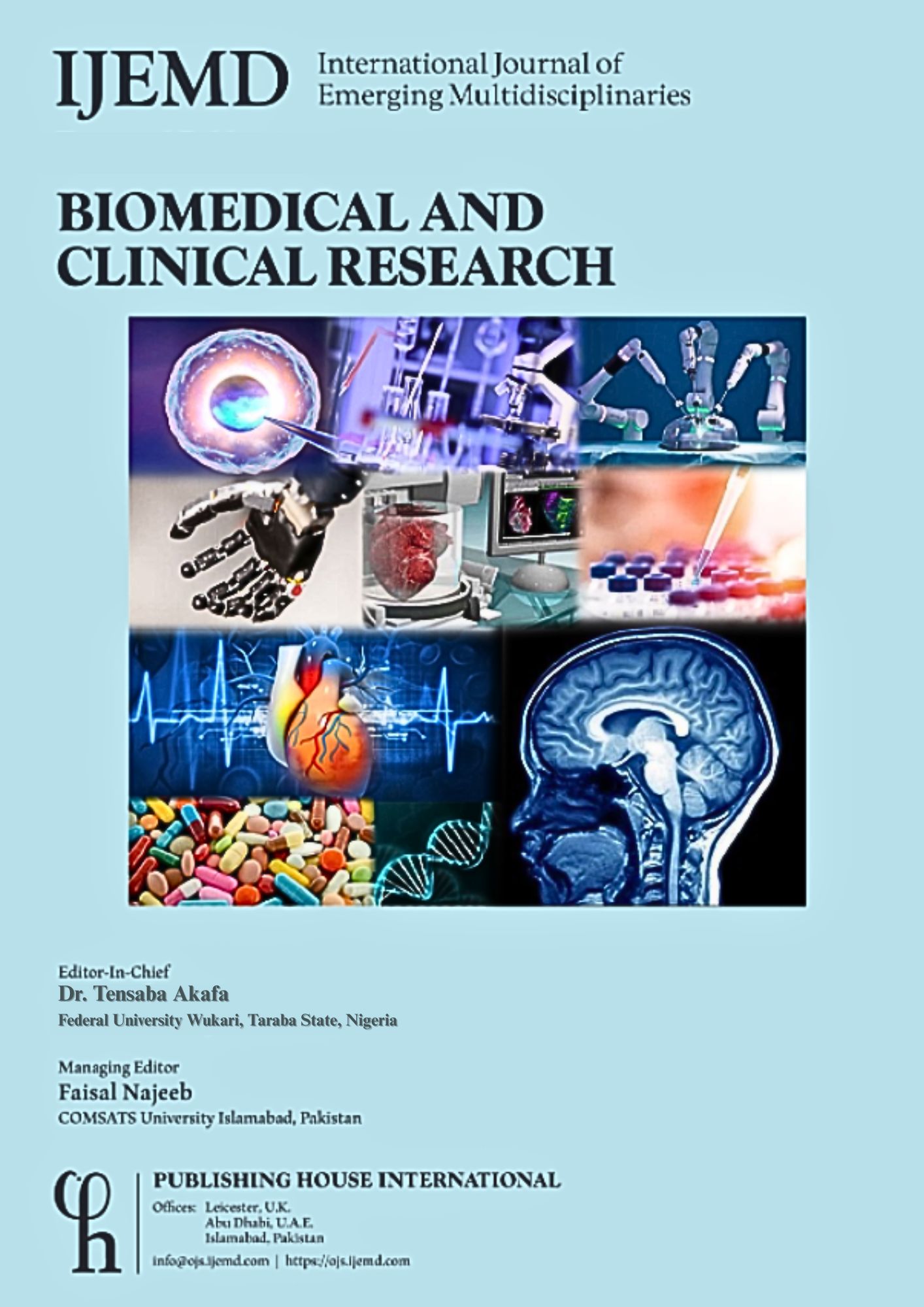Barriers to Care and Unmet Needs of Adults With Low Back Pain and Functional Disability Attending General Outpatient Clinic in a Tertiary Health Facility in Southern Nigeria
DOI:
https://doi.org/10.54938/ijemdbmcr.2025.03.1.396Keywords:
Barrier to care, Unmet need, Low back pain, Functional disabilityAbstract
Background: Low back pain (LBP) is a common health concern that can lead to functional disability in adults. The study aimed to assess barrier to care and unmet needs of adults with low back pain and functional disability attending GOPC at the University of Uyo Teaching Hospital Akwa Ibom State with a view to improving the quality of life by decreasing disability and reducing the burden of LBP among the adult population through prevention of low back pain, addressing barriers to care and unmet needs. Limited access to healthcare services, specialist care, and rehabilitation programs. high out-of-pocket costs, inadequate insurance coverage, and financial constraints, limited understanding of low back pain and functional disability, treatment options, and self-management strategies are some of the barriers facing adult patients attending the GOPC.
Methodology: The study was conducted in the General Out-Patient Clinic of the University of Uyo Teaching Hospital Akwa Ibom State involving all adult patients aged 18 years and above presenting at the GOPC It was a cross-sectional analytical study design with 370 minimum sample size and systematic sampling technique used in selecting the study participants. The study tool was Interviewer administered semi-structured Oswestry lumbar disability questionnaire. The data was collected for a period of two months during clinic sessions and Statistical Package for Social Sciences (IBM SPSS) version 27 software was used for analysis. Frequency table was used to presents pattern of pain. Chi square test or Fischer’s exact test was used to determine association between Body mass index (BMI) and the severity of low back pain. Barrier to care and unmet needs of adults with low back pain and functional disability was assessed using chi square or fisher exact test. Pearson correlation was used to assess linear relationship between severity of low back pain and functional disability and P-value less than 0.05 at 95% Confidence interval was cut-off mark for level of significant
Results: The mean age of respondents was 40.2 years (±2.20 SD. LBP was significantly associated with low function, and the association became stronger as the duration of LBP increased. Majority of the respondents were obese with BMI 25.0-29.9 kg/m2. Prevalence of pain intensity (Oswetry Low back pain disability) of the respondents was higher with proportion of 56.70%. Pattern of pain intensity (Oswetry Low back pain disability) of the respondents was higher with 70.3% each respectively agreed that Lifting weight and sitting increases their pain. Likewise, Standing increased their pains with a higher proportion 66.2%). For grading of Visual Analogue threshold of pain among respondents using VAS scale. Overall, about one-fifths of the respondents did not experience pain 20.3%. While a little above one fifth of the respondents had mild pain threshold 23.6%. Similarly, a higher proportion of respondents had moderate pain threshold 31.1%.This difference was statistically significant (p<0.0001). The median pain score of respondents was 52, significantly graded at range of 8-14; p<0.001). Concerning the risk factors of low back, a higher proportion of respondents 39.6% agreed to have consumed alcohol (p=0.005). This was statistically significant (χ2=32.80, p= 0.005).). Furthermore, a proportion of respondents 267 (72.2) did not smoke cigarette. The difference was statistically significant (χ2=28.02, p= 0.001). Pain intensity, lifting mean SD, pain in the past month and Pain interference with home making, mean (SD) were significantly associated among respondents with functional disability posing barrier to care. Respondents who had low back pain had 1.70 times likelihood of experiencing functional disability compared with those without low back pain (95% CI: 1.18-2.44). Likewise, respondents who had < 2 years duration of low back pain had 1.27 times likelihood of experiencing functional disability compared with those with more than 2 years duration of low back pain (95% CI: 0.79-2.06). Respondents who smoked cigarette had 1.65 times likelihood of experiencing low back pain compared to non- smokers (95% CI: 1.093-2.493). Also, alcohol intake significantly (p=0.0001) increased the likelihood of experiencing low back pain by 2.653 (95% CI: 1.741-4.044).
Conclusion: LBP is associated with functional disability among adults. Limited access to rehabilitation programs, inadequate focus on functional ability and daily activities, limited education on low back pain and functional disability, inadequate support for self-management and lifestyle modifications, limited support for daily activities, inadequate assistance with mobility, and inaccessible environments are their unmet needs. Therefore, preventing the risk factors, caring and pain relief, adequate use of multi-modal pain management strategies are way forward for preventing functional disability as early diagnosis and treatment, coupled with health education are recommended.










